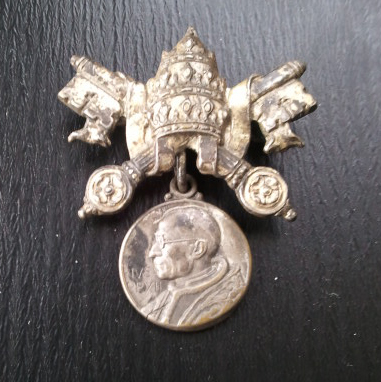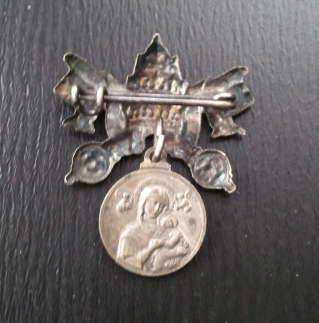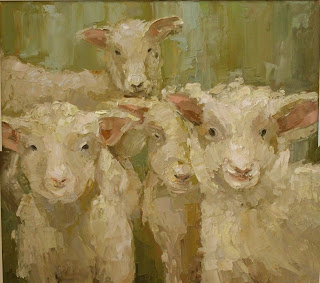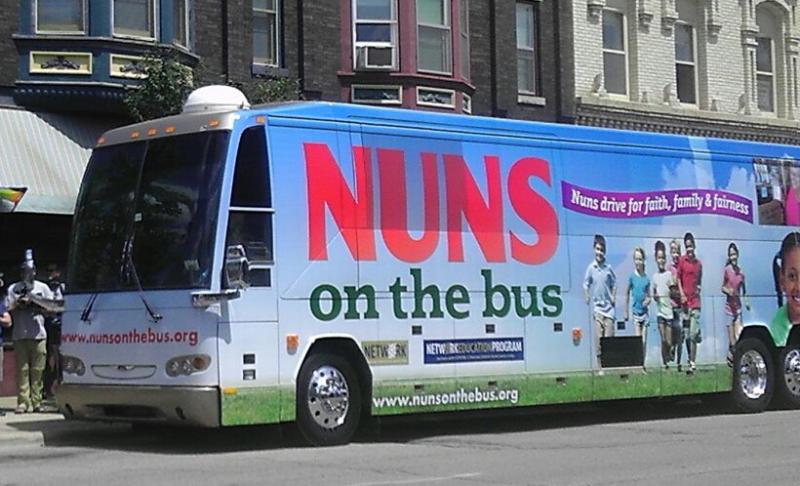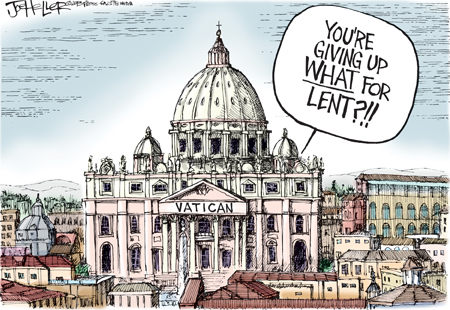Antique shops range from the high-end and museum-like to the crazy hodge podge of the junk shop. I was was somewhere in-between at a quirky, used items emporium when I found this medal in a case of lapel pins. Recognizing the papal keys but not the face, I thought I’d add it to my small collection of Sunday school and church pins and see if I could learn more about it.
The back of the medal shows the Madonna and Child with two angels.
When I got home and was able to look more closely, the glasses and the distinctive nose, along with the image of Mary convinced me it was Pius XII, and indeed, with a bit of computer-aided enlargement I could just make out the “IVS XII” on the left.
Pius XII is perhaps best known for being pope during World War II, but during his nineteen-year papacy he also defined the dogma of the Assumption of Mary, namely that she “having completed the course of her earthly life, was assumed body and soul into heavenly glory.”
Whether or not that dogma carries any significance for your personal spiritual life, it is one of the Church’s elegant solutions. To understand the beauty of that statement you should know that there have been many debates about what exactly happened just before Mary went up to heaven. Did she die? Was she taken up before she died? Did she die in the process of being taken up into heaven? Did her soul precede her body? Should this event be called the Dormition of the Virgin or the Assumption?
You can see where this leads. If you really try to nail down all the details, the minute-by-minute, you’ll venture into a dangerous place. You can argue forever. A lot of theology is like that. You have to know what you can say (or can agree to say), and when to stop.
Which is why that phrase “having completed the course of her earthly life” is so fine. It says what can be said, but no more. Sometimes living with a little ambiguity is the most honest thing you can do.

